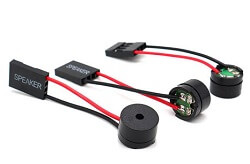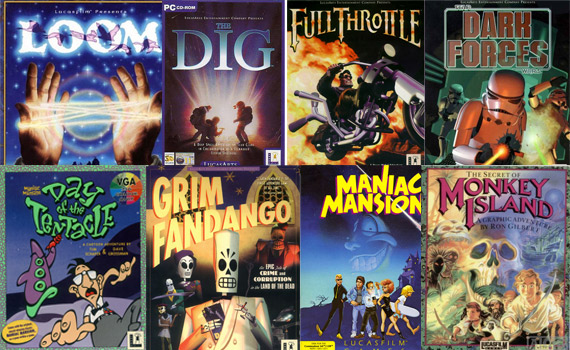What is an Internal Speaker?
Many computers start up with a single electrical beep tone. In more recent computers, this sound is far less frequent than it used to be. The internal speaker or computer speaker produces the beep. In 1981, IBM debuted the internal speaker along with the first personal computer. Despite having just two small wires connecting it to the motherboard, it was capable of producing simple sounds. Normally, this would just apply to tones. This was partially due to the inability to produce audio of a high enough standard for conversation or music. In addition, there was no electronic audio to play because the initial software was insufficient. What is the purpose of the Internal Speaker?The internal speaker's basic and original role was to deliver audible "beep codes" during the startup process. This was a component of the POST process, which checks sure crucial hardware is available and operational in the startup process. There is no video display at this point in the boot process because the video driver, which depends on functional RAM, has not been activated. Therefore, one of many tones is played by the internal speaker. The issue can be determined by decoding these tones using the motherboard documentation. Generally speaking, the single brief beep meant "no trouble." Thus, it was audible whenever the machine would fully boot, which was virtually always. The internal speaker may be accessed and used by computer software. This was frequently applied to basic error tones. However, other programs-particularly video games-took this a step further. It was possible to force the speaker to play notes it couldn't ordinarily play by utilizing "pulse width modulation." It was used to produce simple sounds and even language. However, use in games was constrained since processing the game while keeping to the strict time constraints was challenging. Even a DOS virus used the internal speaker at one point. When a . COM file was accessed, the 1993 program "Techno," which added itself to the end of the file, had a one in ten probability of activation. The virus would play a techno tune and slowly and repeatedly type the word "TECHNO" onto the screen until it was full. The word "Techno" was displayed in a big type in the middle of the screen once it had filled up. The virus would then shut down for a brief period, enabling the user to keep using the machine. What is the pulse width modulation of an Internal Speaker?Commonly, the PC speaker is designed to recreate a square wave using just two levels of output (two voltage levels, typically 0 V and 5 V), powered by channel 2 of the Intel 8253 (PC, XT) or 8254 (AT and later) Programmable Interval Timer working in mode three (a square wave signal). Direct physical control of the speaker hardware is possible for 2 levels of output through PC I/O port 61H (61 hexadecimal), bit 1. (i.e. 1-bit sound). But it is possible to drive the speaker to a variety of intermediate output levels, acting as a crude digital-to-analog converter, by precisely timing a short pulse and by depending on the speaker's physical sorting characteristics (limited frequency response, etc.). PWM, often known as pulse-width modulation, enables the approximative playing of PCM audio. In category D audio amplifiers, a more advanced variation of this approach is employed. This technology only produces playback of a restricted quality through the PC speaker, but a commercial product called RealSound uses it to enhance the sound of various games. The output voltage must be bipolar in order to make the best use of the output systems' dynamic range and power, and the switching frequency must be significantly greater than the audio frequencies intended to be replicated. However, the output voltage on the PC speaker is either zero or TTL level. The amount of output levels vs the PWM frequency band trade-off determines the quality (effective bit depth). The sum of the audio sample rate and the maximum DAC value must be equal to the set clock rate of 1,193,180 Hz used by the PC's configurable interval timer, which powers the speaker. Typically, at a sample rate of 18,939.4 Hz, a 6-bit DAC with a maximum value of 63 is employed, generating weak but recognizable audio. The lack of a dynamic loudspeaker that is the correct size, particularly in newer devices like laptops that employ a small moving-iron speaker, significantly reduces the audio fidelity of this method. This is due to the fact that PWM-produced audio necessitates the use of a low-pass filter prior to the output in order to reduce switching noise and excessive harmonics. This occurs naturally with a dynamic loudspeaker, but the moving-iron speaker's thin metal diaphragm will let a lot of switching noise through, as well as its numerous direct connections. Since the release of Sound Blaster and other sound cards, the usage of the PC speaker for complicated audio output has decreased. Why Internal Speakers were declined?Internal speakers ceased to function as valid audio devices as computers developed and separate loudspeakers and sound cards were accessible. Even though it was never intended to be a true multifunctional audio device, it was simply outpaced, which is why it was at a disadvantage. Additionally, several channels for exchanging POST error codes were created. The applicable motherboard documentation can be used to visually translate a series of two-digit codes that are displayed on many modern motherboards' pairs of seven-segment displays. A series of LEDs may also be used by some motherboards to show which components have successfully completed POST tests. The internal speaker is still supported by most motherboards. Few motherboard makers integrate internal speakers by default because of the alternative POST debugging techniques and the fact that they add money and are annoying to listen to. Where are the Internal Speakers used?1) Games
Computer games of the time, like the Lucas Arts line of games from the middle of the 1980s, frequently employed extremely inventive uses of the PC speaker to provide the sense of polyphonic music or audio effects. However, these effects either created observable sluggishness on slower PCs or occasionally failed on faster PCs since the technology employed to mimic PCM was highly sensitive to timing difficulties (that is, significantly faster than the program was originally developed for). Additionally, it was challenging for programs to do many other tasks, like updating the interface, while such sounds were playing. Since sound cards can emit complex sounds independently, they swiftly displaced the Computer speaker as the dominant sound effect output source when they were widely available in the PC market around 1990. The speaker was no longer supported by the majority of recently released PC games in the second part of the 1990s. 2) BIOS/UEFI error codesDuring the power-on self-test (POST) sequence, the PC speaker is utilized to signal faults that occurred while the system was booting. It can be used to send "beep codes" linked to issues that impede the considerably more intricate setup of the graphics card from taking place as it's functional before the graphics card. For instance, the Video BIOS often requires operational RAM to activate a graphics card but beeping the speaker just requires ROM and CPU registers. The typical beeping patterns used to indicate different fault codes are "one beep; pause; three beeps; pause; repeat." These patterns are unique to the BIOS/UEFI manufacturer and are often described in the motherboard's technical handbook. 3) Various ProgramsScream Tracker, Fast Tracker, Impulse Tracker, MP (Module Player, 1989), and even device drivers for Linux and Microsoft Windows could play PCM sound over the computer speaker. PC speaker support is a distinct device with specific features on modern Microsoft Windows systems; it cannot be set up as a standard audio output device. This unique sound channel is used by certain apps to create noises. For instance, Skype can employ it as a backup calling signal device in the event that the main audio output device is inaudible. The "Techno" computer virus for Microsoft DOS first surfaced in the 1990s. It played music over the PC speaker while writing the word "TECHNO" repeatedly on the screen. Which Internal Speakers are better than External Speakers?1) Hassle-free connectionsExternal speakers are most often associated with additional wiring, power hookups, and difficulty. A standalone hi-fi system needs separate space and has several cabling and setup challenges. Think about whether you would like that or the practicality and cleanliness of the monitor's built-in speakers. As they are included in the monitor's frame, built-in speakers don't require any extra connections or wires, don't run the danger of being incompatible, and don't take up any more room. Internal speakers are an obvious choice if you want to clear up your area and avoid cords and wires taking over. 2) Offers Streamlined ControlParticularly if your monitor includes a remote control, like the EW3280U and EX2780Q, you may easily manage monitor speakers. Making adjustments on the fly is now easy and quick because there is just a single control point for all audio features. External speakers require their own control system, which might be anything from an additional remote control to clumsy knobs. In either case, consider that by adding additional speakers, you're also extending the user interface and ergonomics. 3) One Stop Audio solutionMany individuals use the same display for their Pcs, consoles, and set-top streaming boxes because modern panels come equipped with various video ports. The sound from all of those sources receives a quality increase and may be enjoyed in one location if the monitor has powerful speakers. It also makes it easier to regulate audio for various devices if it all goes through the monitor. There is no need to alter any of the sources, merely the monitor. |
 For Videos Join Our Youtube Channel: Join Now
For Videos Join Our Youtube Channel: Join Now
Feedback
- Send your Feedback to [email protected]
Help Others, Please Share










